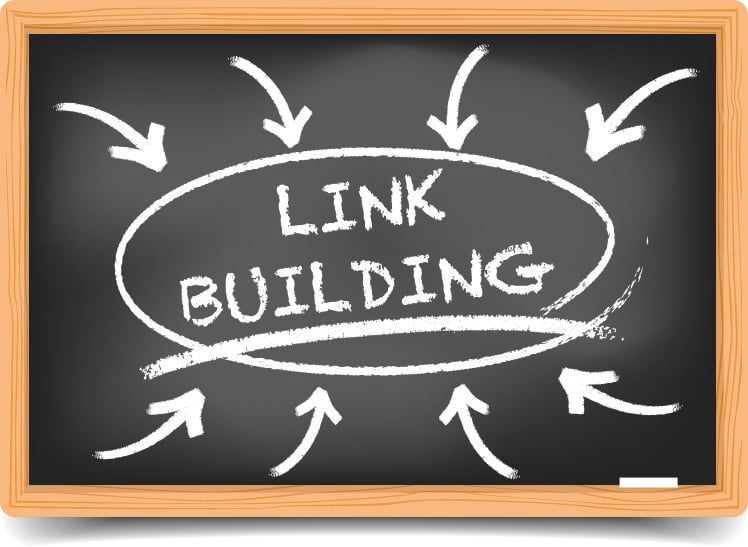Are you ready to maximize your SEO performance?
Search Engine Optimization (SEO) gives businesses an opportunity to boost their online visibility.
There are many factors that influence a successful SEO campaign. These include content, social media, and web design.
At the top of this list is link building.
Content optimized for search engine use has a healthy backbone of links. In fact, high-quality links can be the key to generating the right results with any SEO campaign.
There are a variety of SEO link building tools at your disposal when it comes to honing your SEO link strategy.
In this post, we’ll look at the tools you won’t want to overlook as you optimize your content!
1. Ahrefs
Ahrefs is one of the best SEO link building tools available to businesses and consumers. It offers businesses competitive analysis and content research. It also enables users to effectively research backlinks.
In fact, Ahrefs has the world’s largest index of backlinks. Ahrefs’ powerhouse web crawlers update this index every fifteen minutes.
What’s more, backlink research is easy and effective with Ahrefs. Users simply type their URL into Ahrefs’ Site Explorer tool. Once they do, they receive instant data on total backlinks and other key metrics related to site SEO.
This platform is ideal for business owners keen to perform competitive link analysis. This enables them to compare backlink performance with that of industry competitors.
In fact, with Ahrefs’ assistance, you can explore contextual link opportunities. These links are most likely to leverage your current content.
Users can also examine link quality of competitors’ sites. It is possible to analyze your own low-quality or lost links with Ahrefs, too.
Additionally, Ahrefs makes it easy to track your link building campaign. It generates comprehensive reports that show referrals and other opportunities.
Ahrefs may constitute a significant investment for users. But it is one of the more valuable SEO link building tools available to experts and amateurs alike.
2. BuzzSumo
BBuzzSumo is a critical resource when it comes to SEO link building tools. Users will love what it does for link prospecting.
Link prospecting is all about time-intensive research. It identifies publications and guest posting opportunities. These can provide a high-quality foundation of backlinks.
Some business owners take link prospecting into their own hands. But doing so can often take more time than it is worth. This is where BuzzSumo enters the scene (in flying colors).
BuzzSumo enables users to build a list of influencers, bloggers, writers, and experts. These individuals are relevant to a business’s aims.
Users track interactions with these prospects as they search for link building opportunities.
Marketers are also more likely to pitch relevant publications when using BuzzSumo. The tool allows users to analyze trending content and organize influencers based on niche interests.
BuzzSumo can be integral to any marketer’s scorecard of effective link building techniques.
3. LinkedIn
A lot of marketers overlook social media when composing an SEO link strategy. However, social media gives marketers powerful opportunities for engaging with influencers and partners.
LinkedIn is the social media giant of professional online networking. It is an ideal resource for most any professional activity, but it can also play a handy role in your link building efforts.
Use LinkedIn to easily gather contact information for journalists, bloggers, influencers, and CEOs and directly reach out to this individuals through LinkedIn’s InMail system. This can prove valuable in the link prospecting phase of link building campaigns.
Through LinkedIn, a link prospector can acquire scores of emails and use these in programmed link building outreach.
4. BuzzStream
Once link prospecting is underway, it’s key to actively manage your outreach efforts. For outreach management, BuzzStream is one of the better SEO link building tools available.
If you’re still prospecting, BuzzStream enables users to quickly and effectively research prospects. But it is best known for its ability to handle outreach without having to configure multiple emails and campaigns.
Use BuzzStream to easily manage bulk emails and track campaign performance. With BuzzStream’s help, marketers can also gather contact information from domains, which immediately get imported into contact lists.
BuzzStream’s campaign performance metrics enable users to hone existing campaigns based off of clickthrough and open rates.
The best part about BuzzStream’s outreach is how personalized you can make your efforts. Bulk emails through BuzzStream aren’t likely to come across as spam.
In fact, BuzzStream claims that its outreach management is “relationship-based.”
5. Majestic
Majestic offers much that Ahrefs and SEMRush provide users, but it should still be on your list of SEO link building tools.
This is because Majestic specifically addresses SEO professionals, developers, and media analysts in the tools it offers. You can trust link-building platforms that keep SEO at the fore (because that’s what links are all about).
Majestic can back up any link indexing you’ve already performed with its extensive link database. Detect backlink history, gather URL Search Scores, and analyze link intelligence API.
Majestic users will appreciate the platform’s ability to identify relevant domains and also rank their trust factor. This can aid in link prospecting optimization and targeted outreach.
Much like Ahrefs, Majestic enables business owners to get a glimpse of their competitors’ linking strategies. This can help them step up their own link building game.
Your Guide to Expert SEO Link Building Tools
Link building is an integral part of any SEO campaign, and should not be taken lightly. When crafting your link strategy, be sure to rely on competitive SEO link building tools.
Ahrefs, in particular, consistently wows marketers looking for competitive link building opportunities. Majestic offers similar capacities with its domain index, backlink profiles, and URL search scores.
Don’t neglect BuzzSumo or BuzzStream for link prospecting and outreach. LinkedIn can be effective at gathering prospect contact information.
At BackLinks.com, we offer link building experts of all industries a fast and effective means of establishing link equity today. Improve your SERP’s with high-quality, one-way text links.











